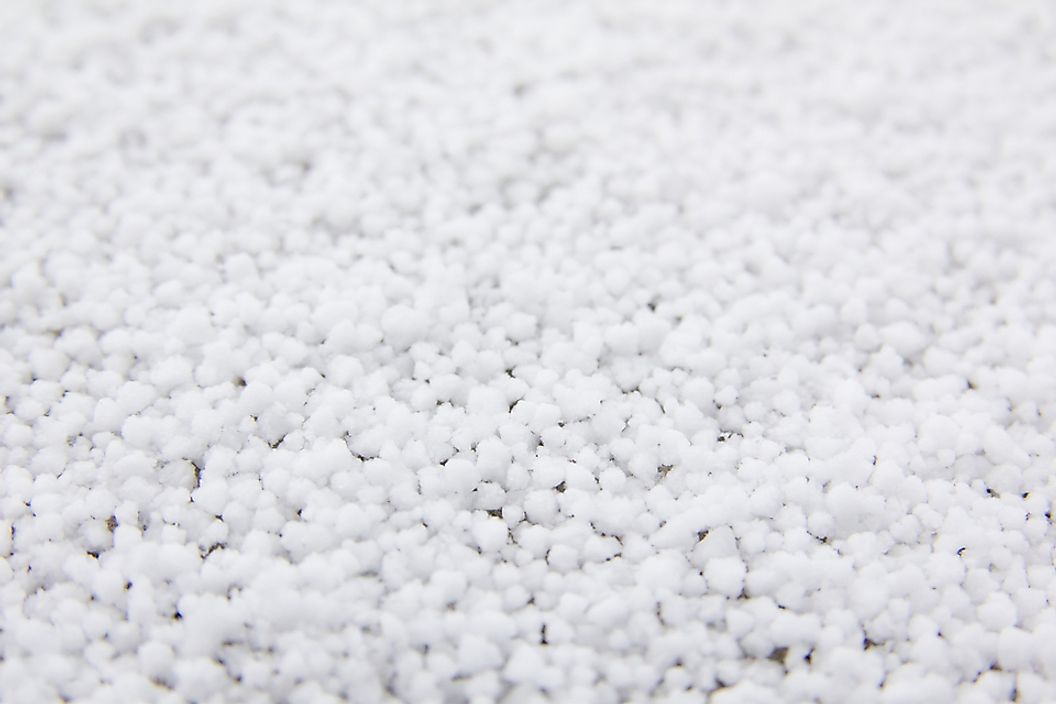What Is Graupel?

Graupel, also referred to as snow pellets or soft hail, is a form of precipitation which forms when super-cooled droplets of water collect and freeze on the surface of falling snowflakes, resulting in the creation of 0.08-0.2 inch rime balls. Previously identified by meteorologists as small hail, graupel is entirely different in both size and shape. The World-Meteorological organization describes small hail as tiny snow pellets which are encapsulated by ice. The name graupel is derived from the German language.
The topography and size of the frozen water droplets cannot be observed using a light microscope because of the instrument's depth of field and resolution. Nevertheless, observations of graupel using a low-temperature scanning electron-microscope show numerous cloud droplets measuring about 0.002 inches on the surface of the snowball.
How Is Graupel Formed?
Under certain atmospheric conditions, snowflakes encounter super-cooled water droplets in the atmosphere. These water droplets, whose diameter is 0.00039 inches, exist in liquid form at extreme low temperatures (-40 degrees Celsius). When in contact, these droplets collect and freeze on the surface of snowflakes through a process known as the accretion. Snowflakes with frozen water droplets on their surfaces are called rime. As more water droplets freeze on the snowflake, the original shape of the snowflake changes, resulting in the formation of graupel.
What Is the Difference Between Graupel and Hail?
Hail has thick uniform layers of ice, while graupel is a fragile oblong shaped snowball. Ice from a hail storm only falls during thunderstorms, while graupel falls in wintry mix (a mixture of snow and rain) weather conditions. Hail is formed when the updraft of a thunderstorm carries water droplets into the cold part of the atmosphere, where it freezes before dropping down to the ground as hail.
What Is the Difference Between Graupel and Sleet?
Despite some resemblance to hail, sleet is translucent small ice balls that bounce when they hit the ground, while graupel is fragile white snowballs that disintegrates when they hit the ground or when touched. Sleet form during winter storms, when the surface of a snowflake partially melts and then refreezes before hitting the ground, while graupel is created when water droplets freeze on the surface of snowflakes. Sleet are formed when snowflakes pass through two layers of air, and the warm air melts the snowflakes while the cold air refreezes it before it hits the ground.
Graupel and Avalanches
Graupel is formed in extremely high altitude climates, and is more granular and denser than regular snow because of its rimmed surface. Graupel resembles smaller polystyrene beads. The combination of low viscosity and density makes the fresh graupel layer very unstable on slopes, which can result in dangerous slab avalanches.
Thin graupel layers falling at low temperatures can act as bearings on subsequent stable snowfall, thus making the ice liable to cause an avalanche. Snow pellets tend to stabilize and compact about two days after falling, depending on the properties of the ice pellets and the temperature.











